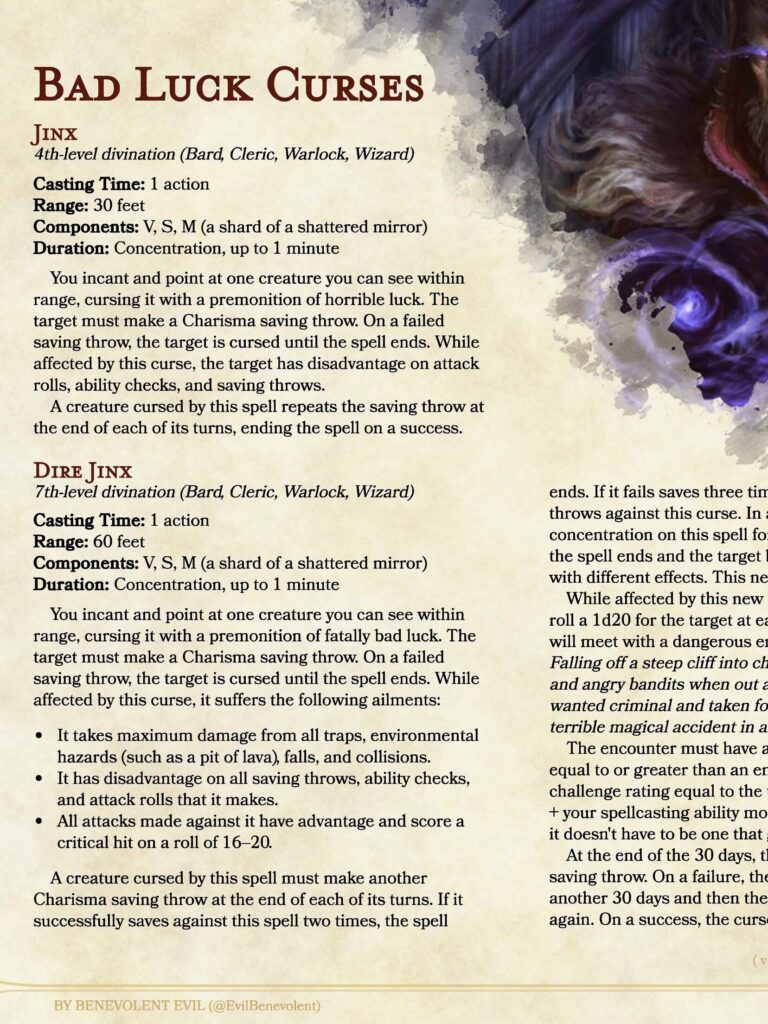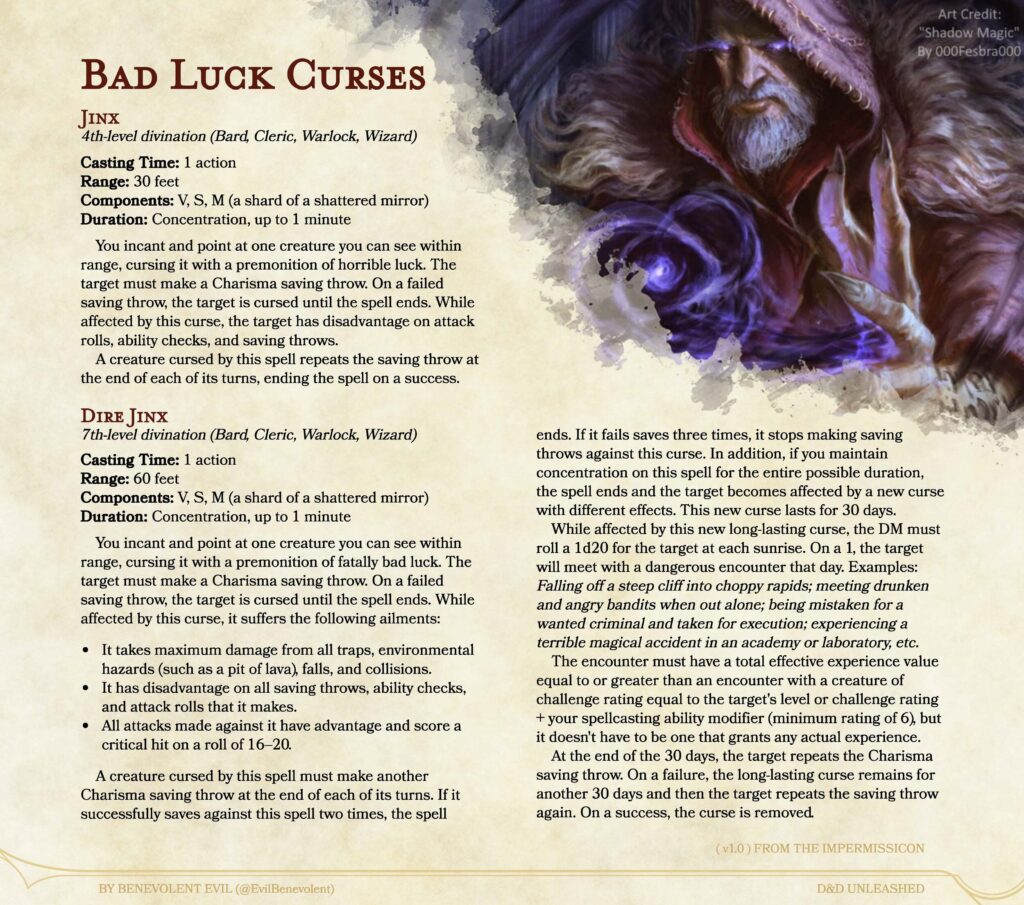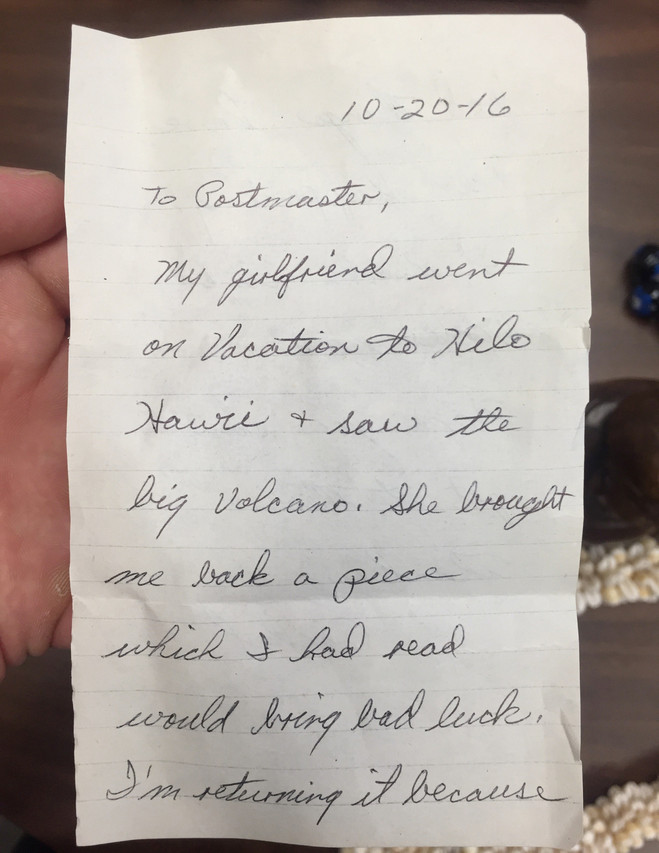Have you ever wondered if a place can be cursed or bring bad luck? In this article, we will explore this intriguing phenomenon and examine whether certain locations can indeed possess a negative energy or influence. Through a careful analysis of real-life stories and cultural beliefs, we will delve into the idea of cursed places and the potential causes behind the perceived misfortune associated with them. By the end, you’ll have a deeper understanding of this captivating topic and the possible influence of our surroundings on our lives.

Defining a Curse
A curse can be defined as a form of supernatural or spiritual punishment that is believed to bring harm or misfortune to a person, object, or even a place. It is often associated with negative energy and the belief in supernatural forces that can cause harm and distress. Throughout history, curses have been believed to have the power to affect not only individuals but also entire locations. Such cursed places are believed to bring bad luck to those who encounter them.
Historical Examples of Cursed Places
A number of historical examples illustrate the notion of cursed places. One notable example is the ancient city of Troy. According to Greek mythology, the city was cursed by the gods, resulting in its destruction during the Trojan War. The curse brought about a series of tragic events and misfortunes that led to the downfall of Troy.
Another famous cursed place is the Tower of Babel. According to the biblical account, the tower’s construction was interrupted by a curse from God, resulting in the dispersion of the people and the creation of different languages. This curse symbolizes the struggle and discord caused by human ambition and hubris.
Throughout history, there have been countless tales of cursed locations. These stories often involve elements of tragedy, betrayal, or supernatural phenomena, which perpetuate the belief in cursed places across different cultures and civilizations.
Cultural Beliefs and Superstitions
Cultural beliefs and superstitions play a significant role in shaping the perception of cursed places. Different cultures have their own unique beliefs and folklore surrounding cursed locations. These beliefs are often deeply ingrained in their societal fabric, influencing the way people perceive and interact with certain places.
For example, in Japanese culture, there is a belief in “yūrei,” which are vengeful spirits of the deceased. These spirits are believed to haunt specific places and bring misfortune to those who encounter them. This belief has resulted in the practice of avoiding and respecting certain locations to avoid attracting bad luck.
Similarly, in Western cultures, there are urban legends and myths surrounding cursed places such as haunted houses or jinxed landmarks. These stories create a sense of fear and caution, contributing to the belief in the power of curses and bad luck associated with specific places.
Factors that Contribute to a Place Being Cursed
Various factors contribute to a place being considered cursed. These factors often revolve around tragic events, negative energy and aura, as well as spiritual and supernatural influences.
Tragic Events
One of the key factors that contribute to a place being cursed is the occurrence of tragic events. Locations where significant tragedies or violent acts have taken place are often associated with negative energy and a sense of foreboding. The emotional residue left behind by these events is believed to linger in the environment, resulting in a feeling of unease or bad luck for those who visit or reside in these places.
Negative Energy and Aura
Negative energy is believed to accumulate in certain places, creating an aura of doom and misfortune. This negative energy can be a result of historical events, emotional trauma, or even the presence of malevolent spirits. These places are said to emit a sense of darkness and heaviness that affects the well-being and luck of those who come into contact with them.
Spiritual and Supernatural Influences
Believers in curses often attribute their existence to spiritual and supernatural influences. They believe that malevolent spirits, witches, or even divine beings can place a curse on a place due to various reasons, such as revenge, punishment, or protection of sacred sites. These supernatural influences are thought to manifest in the form of manifestations, apparitions, or unexplained phenomena, creating an aura of darkness and misfortune.

Effects of a Cursed Place
Being in or near a cursed place is believed to have a range of effects, including physical manifestations of bad luck, psychological impact on people, and social consequences.
Physical Manifestations of Bad Luck
One of the perceived effects of a cursed place is the physical manifestations of bad luck. People who visit or reside in these locations may experience a string of misfortunes such as accidents, illness, or financial hardships. These occurrences are seen as evidence of the curse, reinforcing the belief in the cursed nature of the place.
Psychological Impact on People
Cursed places can also have a profound psychological impact on individuals. The fear and anticipation of encountering negative energy or supernatural phenomena can lead to anxiety, stress, and a constant feeling of unease. The psychological toll of a cursed place can affect one’s mental well-being and overall quality of life.
Social Consequences
Cursed places can also have social consequences for communities and societies. These locations may deter visitors or potential residents, leading to economic decline and a loss of cultural heritage. The fear and stigma associated with cursed places can also create divisions within communities, as people may avoid or shun those who live or work in these areas.
Famous Cursed Places Around the World
Numerous places around the world have gained notoriety for their perceived cursed nature. These locations capture the imagination and fuel fascination due to the stories and legends surrounding them.
The Cursed City of Pompeii
Pompeii, the ancient Roman city destroyed by the eruption of Mount Vesuvius in 79 AD, is often considered cursed due to the tragic events that unfolded there. It is believed that the ruins of Pompeii carry the energy of the volcano’s eruption, resulting in misfortunes for those who disturb or disrespect the site.
The Haunted Ghost Town of Pripyat
Pripyat, the town near the Chernobyl Nuclear Power Plant, is infamous for the nuclear disaster that occurred in 1986. The tragic events and subsequent abandonment of the town have led to the belief that it is haunted and cursed. The area is said to be plagued by residual radiation and negative energy, resulting in illnesses and misfortune for those who enter.
The Mysterious Bermuda Triangle
The Bermuda Triangle, located in the western part of the North Atlantic Ocean, has long been associated with unexplained disappearances of ships and planes. The high number of reported incidents in the area has fueled speculation about supernatural or extraterrestrial influences, leading to the belief that the Bermuda Triangle is cursed or possesses an otherworldly power.
Scientific Explanations and Skepticism
While belief in curses and cursed places is widespread, scientific explanations and skepticism challenge these notions. Skeptics argue that many perceived curses may be the result of psychological expectations and confirmation bias.
Psychological Expectations and Confirmation Bias
Psychological expectations can greatly influence one’s perception of a place. When one believes a place is cursed, they are more likely to interpret any negative events or coincidences as evidence of the curse. This confirmation bias reinforces the belief in the curse, even though there may be alternative explanations for the misfortunes experienced.
Environmental Factors and Coincidences
Environmental factors can also contribute to the perceived cursed nature of a place. Natural disasters, geological phenomena, or even toxic substances can adversely affect the luck and well-being of those in proximity. These factors are often overlooked or attributed to supernatural causes, reinforcing the belief in curses.
Critical Examination of Evidence
Skeptics argue that a critical examination of the evidence behind cursed places often reveals logical explanations or lack of substantial proof. They emphasize the need for scientific inquiry and objective analysis when evaluating claims of curses and their effects on places and individuals.
Methods to Remove a Curse
For those who believe they are affected by a curse or trapped in a cursed place, various methods have been suggested to remove or mitigate the curse.
Religious and Spiritual Rituals
Many religions and spiritual practices offer rituals and ceremonies to cleanse and remove curses. These rituals often involve prayers, incantations, and the use of specific objects or symbols to counteract the negative energy and spiritual influences believed to be causing the curse.
Cleansing and Purification Techniques
Alternative methods such as smudging with sage, using salt, or performing ritual baths are believed to cleanse and purify a place or person affected by a curse. These techniques are thought to restore positive energy and dispel negative influences.
Professional Help and Expert Intervention
Seeking the assistance of professionals, such as psychics, mediums, or spiritual healers, is another option for those seeking to remove a curse. These individuals claim to have specialized knowledge and abilities to identify and alleviate curses through spiritual practices or energy work.

Personal Experiences and Testimonials
Many people claim to have experienced misfortune or negative events associated with cursed places. While personal experiences are subjective, these accounts contribute to the belief in the power of curses and their impact on people’s lives.
Accounts of People’s Misfortunes
Individuals often share stories of their misfortunes related to cursed places, attributing their bad luck to the curse’s influence. These firsthand accounts are sometimes passed down through generations and contribute to the perpetuation of the belief in cursed places.
Survivors of Cursed Places
On the other hand, there are also accounts of individuals who have visited or lived in supposedly cursed places without experiencing any negative effects. These survivors provide a contrasting perspective and question the validity of the curse.
Transformation and Redemption Stories
There are also stories of individuals who claim to have overcome the curse’s effects through personal growth and transformation. These accounts highlight the power of resilience and inner strength in conquering adversity.
Contemporary Urban Legends and Myths
In today’s society, contemporary urban legends and myths often perpetuate the belief in cursed places. These legends contribute to popular culture and shape public perceptions of specific locations.
The Cursed Building or House
Urban legends surrounding cursed buildings or houses often involve tales of tragic events, mysterious occurrences, or haunting experiences. These stories generate a sense of fear and intrigue, captivating audiences and fueling the belief in the potential cursed nature of these places.
The Jinxed Landmark
Certain landmarks are associated with bad luck or negative energies due to historical events or supernatural beliefs. These jinxed landmarks become the subject of speculation and cautionary tales, warning people to avoid or approach them with extreme caution.
The Unlucky Street
Similarly, certain streets or neighborhoods are deemed unlucky or cursed due to high crime rates, accidents, or supernatural legends. These areas become stigmatized and evoke fear and avoidance from residents and visitors.

Media Portrayal and Pop Culture
Cursed places have captured the interest of filmmakers, writers, and artists across various mediums. Their depiction in movies, literature, and folklore has further fueled the belief and fascination surrounding these locations.
Cursed Places Depicted in Movies
Many movies have been inspired by the concept of cursed places, often incorporating supernatural elements or vengeful spirits. These films capitalize on the fear and curiosity associated with curses, enhancing their popularity and reinforcing the belief in their existence.
Frequent Mentions in Literature
Cursed places have also made their way into literature, enchanting readers with tales of mystery and intrigue. Authors often tap into the collective fascination with curses, weaving captivating narratives around cursed locations that captivate and entertain their audience.
Influence on Folklore and Urban Legends
Cursed places have become an integral part of folklore and urban legends. These stories are passed down through generations, further perpetuating the belief in their power and impact. They hold a significant place in the collective imagination and contribute to the cultural fabric of societies worldwide.
Conclusion
In conclusion, the belief in cursed places and their ability to bring bad luck is a deeply ingrained aspect of human culture. Historical examples, cultural beliefs, and personal experiences contribute to the widespread belief in the existence and power of curses.
While scientific explanations and skepticism challenge the notion of curses, personal experiences and the perpetuation of urban legends continue to fuel the belief in their influence on places and individuals.
It is important to strike a balance between belief and skepticism, respecting cultural perspectives, and acknowledging the unexplained nature of certain phenomena. Exploring and understanding the origins and cultural significance of cursed places can deepen our appreciation for the human need to make sense of the mysterious and unknown.

